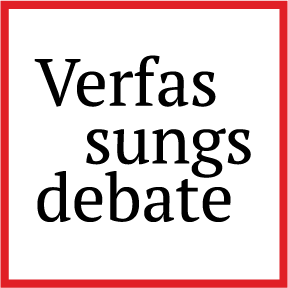Beyond the Fog of War
On the ECtHR’s Ukraine, The Netherlands v. Russia judgment on the merits
Superlatives are often overused – but in the case of the Grand Chamber judgment in Ukraine, The Netherlands v Russia, delivered on 9 July 2025, they are not only justified but arguably inadequate. This case stands out as one of the most consequential and complex in the history of the European Court of Human Rights. It addresses systemic human rights violations committed in the context of an ongoing international armed conflict and during a prolonged period of occupation. The Court unequivocally affirms Russia’s responsibility for the downing of flight MH17 and for an overwhelming catalogue that bears witness of the profoundly inhumane Russian conduct in Ukraine.
This blogpost post cannot possibly do justice to the breadth of the 497-page ruling – a judgment that will leave a lasting mark on international law and serve as a foundational document for the historical record of the conflict in Eastern Ukraine. My aim here is to highlight some of the key findings and to briefly reflect on some broader implications of this landmark.
Zeitenwende
The case consolidates four inter-State applications, three lodged by Ukraine, one by the Netherlands. The case also comprises the Russian invasion of Ukraine since February 2022.
The leitmotif of the case was the interplay between the European Convention on Human Rights and the body of rules applicable during armed conflict – International Humanitarian Law (IHL). The Court applied the Convention in parallel with IHL and identified numerous violations of fundamental rights, ultimately holding Russia accountable. While the Court has had the opportunity to apply the Convention in line with IHL before, this judgment encompasses the right to life in the context of conflict and occupation. It makes explicit findings on the question of compatibility of the impugned Russian conduct with the pertinent norms of IHL.
The Strasbourg court took this new approach after “reflecting anew” on its institutional role in light of the watershed moment represented by Russia’s full-scale invasion of Ukraine, a moment that profoundly challenges the European human rights system (para. 349). The case attracted extraordinary engagement from the broader Convention community: 26 Member States intervened as third parties. The Court’s evolving approach was undertaken with the express support of the majority of these intervening States (para. 349), marking a notable step in the jurisprudential development of the interrelation between human rights and the laws of armed conflict.
The Strasbourg Court asserted its duty of harmonious interpretation of the Convention with IHL “so far as possible” (para 430). It emphasised that it may interpret and assess compliance with IHL where necessary to carry out its role. It uses the language of international law, while remaining mindful of the limitations of the Court’s subject matter jurisdiction (para 149).
The inter-State application under Article 33 ECHR provided the European Court of Human Rights with compulsory jurisdiction over Russia. From a formal point of view, the Court’s jurisdiction is limited to the four corners of the Convention. It has no jurisdiction over jus ad bellum or jus in bello. No other international judicial body enjoys – or has enjoyed – Russia’s consent in this regard. The Court’s temporal jurisdiction over Russia ended on 16 September 2022. Russia ceased engaging with the Court in March 2022, in the context of its expulsion from the Council of Europe in the wake of its war of aggression.
Elsewhere, international proceedings between Ukraine and Russia are ongoing, for example at the International Court of Justice, based on the Genocide Convention that opens up a rather narrow corridor of jurisdiction.
From context of chaos to accountability
In its 2021 Georgia v Russia II judgment, the Court had taken a different stance (para 142), holding that it “lacks the legal basis to assessing acts of war and active hostilities in the context of an international armed conflict outside the territory of a respondent State”. Famously, it referred to a “context of chaos” and the “fog of war,” which made it impossible to assess the events in question. The approach taken with regard to the right to life under Article 2 ECHR has failed to convince many.
In the present judgment, the Court took a different, more embracing approach. It explained that it examined the facts to determine a conflict between IHL and the ECHR (para 430). This approach is undoubtedly more demanding, as the factual assessment of a protracted, multi-faceted – foggy and chaotic – armed conflict is, of course, resource-consuming for an already heavily burdened Court.
Bucha, Izium, Motyzhyn, Husarivka and Vorzel … and more
What does this mean in practice? By way of example, it means that the Court examined reports concerning places like Bucha – and many others – where human lives were ended during the period between 2014 and 2022. The protection of the right to life under IHL and Human rights law can differ, that is why their co-application can be difficult. IHL protects the life of those not directly involved in the conflict. The killing of combatants can be in line with IHL. Thus, the factual background for a finding is an important basis for an accurate assessment. To gain clarity on the facts in the context of an armed conflict is not an easy task. Against this background, the Court notes that “there is no evidence, in any of the examples to which the Court has referred above, to suggest that the use of force might have been justified under international humanitarian law.” (para 1042). This in itself must sink in and is also notable because the Court had to deal with an absent respondent.
The Court finds Russia in violation of humanitarian law and of Article 2 ECHR, the right to life (para 1042). Accordingly, in the operative part of the judgment, Russia is found to be responsible for an administrative practice in violation of Article 2 of the Convention, involving the extrajudicial killing of civilians and Ukrainian military personnel hors de combat in occupied territory in Ukraine between 11 May 2014 and 16 September 2022.
Procedure
The Court’s handling of evidence in this context certainly warrants deeper exploration, almost 2,000 pages of annexes are impressive. Jasmine Sommardal has offered analysis in this and many other regards. The Court relied on a range of international inquiry documents. In inter-State proceedings, the Court effectively acts as a court of first instance – a significant role for an already overburdened institution.
Interim measures have become standard tools in inter-State proceedings, with the Grand Chamber emphasizing their legal importance in relation to the duty to cooperate under Article 38 of the Convention (see paras. 1631ff.). Additionally, the application of Article 46 ECHR measures for the protection of abducted children is worth highlighting, and heart-breaking.
Of crucial importance will be how the Court now deals with the 9,500 overlapping individual applications. The issue of just satisfaction, which concerns both inter-State and individual applications, has been adjourned in the present case. It will be interesting to see whether and how the Register of Damage in Ukraine will interact with the proceedings pending before the Court, both in inter-State and individual cases. For the applicant States, it is essential to identify victims and provide evidence showing that they were affected by the alleged violations.
Impact and the way forward
The immediate impact of the judgment may be limited at this moment, but nothing documented here will be forgotten in the medium and long term.
I take the occasion to make a plea for further improvement of the Court’s website regarding inter-State proceedings. The potential benefits in terms of accessibility, research potential, and public confidence would be considerable. The third-party interventions by the 26 member States in the case of Ukraine are available mainly through a post by Marko Milanovic on EJILTalk!. In my view, it would be good to have the States’ submissions available on the official website of the Court. Such a measure would perhaps help to disincentivize the “letter writing to the Court”.
The judgment comes at a time when the role and resilience of the European Court of Human Rights are being tested from multiple directions: geopolitical fracture lines reflected in inter-State cases, the transformative impact of AI on fundamental rights, the Covid-19 pandemic, as well as migration and climate change judgments that test the limits of consensus in Europe.
And yet, the demand for the Court’s guidance – reflected in the inter-State docket – has never been greater. Individuals and States alike turn to Strasbourg not just to correct violations but to seek direction in legal terrain that is often uncharted. The inter-State procedure is emblematic of this evolution: originally conceived as a diplomatic safeguard and minimum oversight mechanism, it is now one of the very few legal avenues for judicial accountability in the context of armed conflict and systemic abuses.
The judgment is also remarkable for its relative speed. While part of the case had been pending since 2014, the Court addressed developments since the 2022 full-scale invasion with priority, proceeding from March 2022 without engagement from the respondent State.
Approximately 9,500 individual applications related to the same factual matrix remain pending before the Court. Notably, 18% of all individual applications currently before the Court overlap with inter-State proceedings (several other inter-State applications are pending before the Court) – a figure that illustrates both the scale of violations and the institutional burden associated with conflict in Europe.
The judgment deserves to be recognised as a landmark achievement – not least because it was rendered by a chronically under-resourced institution. The European Court of Human Rights now adjudicates a number of inter-State cases on a scale comparable to those before the International Court of Justice, all while simultaneously managing tens of thousands of individual applications.
A powerful weapon against (aspiring) tyrants
Inter-State applications are among the most politically sensitive, factually complex, and legally consequential proceedings before the European Court of Human Rights. They test the limits of what international adjudication can achieve – and yet, they are also powerful reminders of why the Convention system matters. These cases are about the visibility of truth, the memory of injustice, and the possibility of redress – even if delayed.
And while Europe revamps much-needed spending on military defence, it should not be forgotten that the Convention system is a powerful weapon, too – a weapon against (aspiring) tyrants and authoritarianism.



